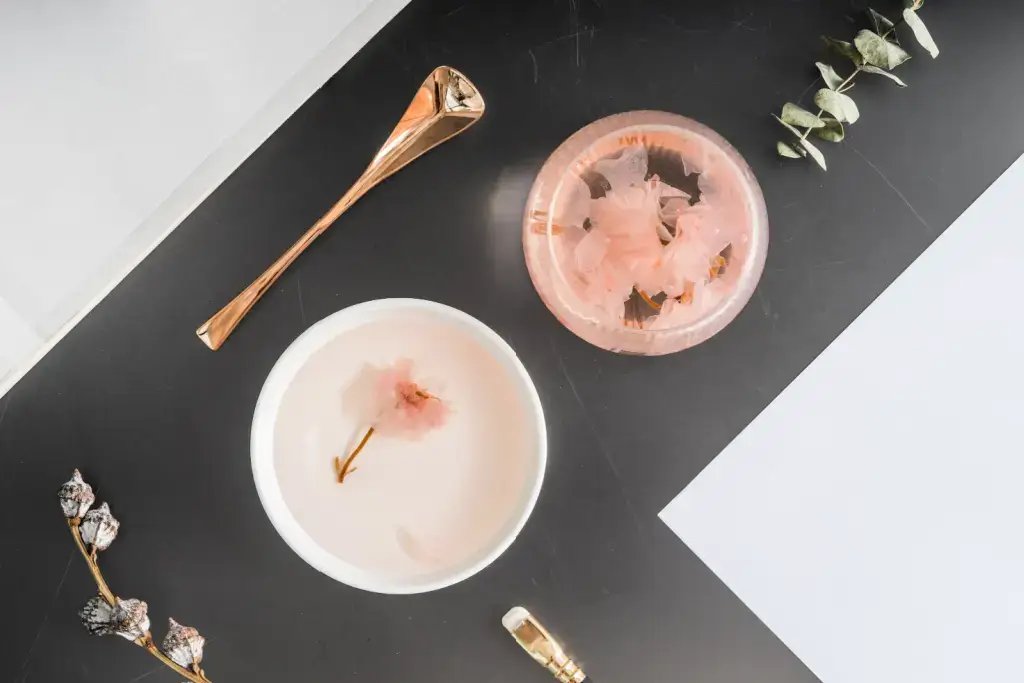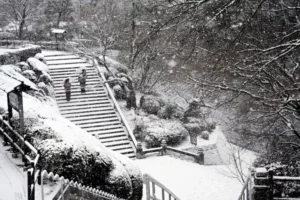Cherry blossom tea (sakuracha) is enjoyed across East Asia but has probably been most popularized in Japan. Initially, it was enjoyed exclusively by the Japanese upper class during blossom-viewing picnics (hanami). But now, anyone can enjoy sakuracha during the spring season. This tea is different from other teas in Japan in both its flavor and preparation.
Unlike other Japanese loose-leaf tea like “green” tea, cherry blossom tea uses dried sakura flower, salt, and vinegar, resulting in a unique flavor and aroma. The tea’s flowery smell combines perfectly with a cherry blossom tree in bloom. Let’s explore how this classic beverage is made and enjoyed.
Table of Contents
ToggleHow is cherry blossom tea made?
There are many steps in the preparation of cherry blossom tea. A mistake during these can ruin an entire batch of sakuracha after many weeks of effort. The time of flower harvesting is an essential part of the process. The blooms are obtained in mid to late spring before they open fully. And a small part of the stem must remain attached to seal in the chemicals.
Each flower must also have the perfect shape and color for the serving presentation that is to come. Double-flower types like yamazakura are preferred for the best color and flavor. But the more common single-flower somei yoshino type is also used for a milder taste.
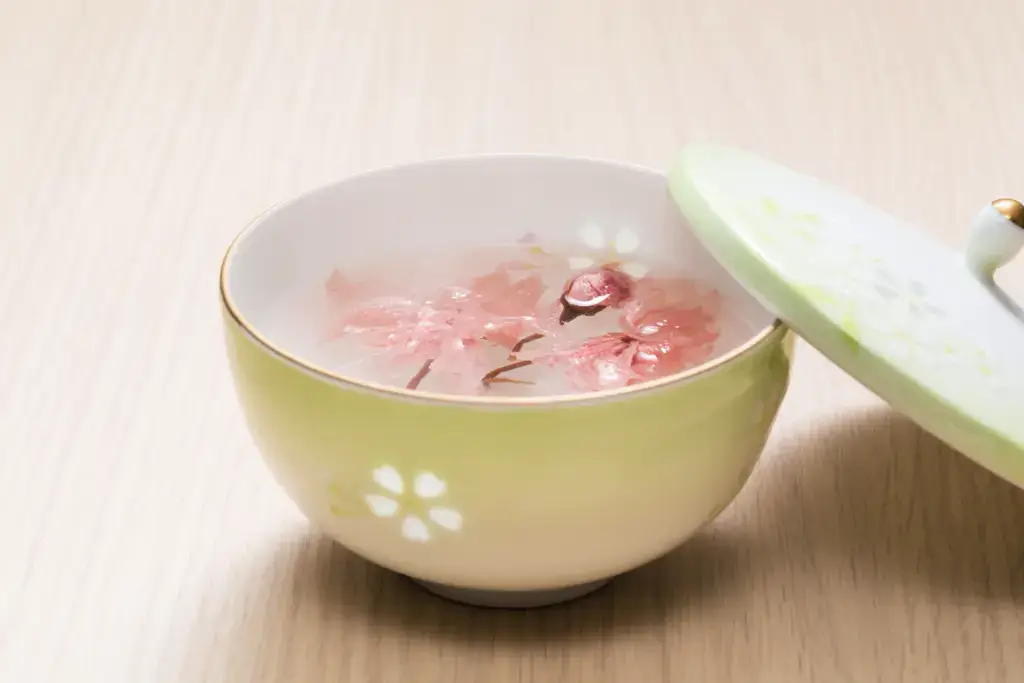
The stem is removed before preservation begins, and salt is added to remove excess moisture. This also starts pickling before the flavors, colors, and aromas fade. Plum (umezu) vinegar is added, and the flowers are dried. Sun drying is gentler than other methods and concentrates the chemicals without damaging the delicate blossoms.
After a few days, any excess vinegar and liquid is removed. Then, more salt is added before the flowers are dried for a few more days. The dried cherry blossoms, such as sencha, are sometimes stored between tea leaves, highlighting the sakura taste.
Are you looking for some amazing cherry blossom tea and snacks? Check out Sakuraco! Sakuraco delivers traditional Japanese snacks, teas, sweets, and snacks from Japan to your door every month so that you can enjoy Japan’s taste anywhere!
Serving
Even when done correctly, the dried sakura can be very salty. The dried blossoms are fragile, so excess salt must be gently shaken or washed off before tea preparation. Usually, about two or three bunches of dried sakura flowers are used per serving.
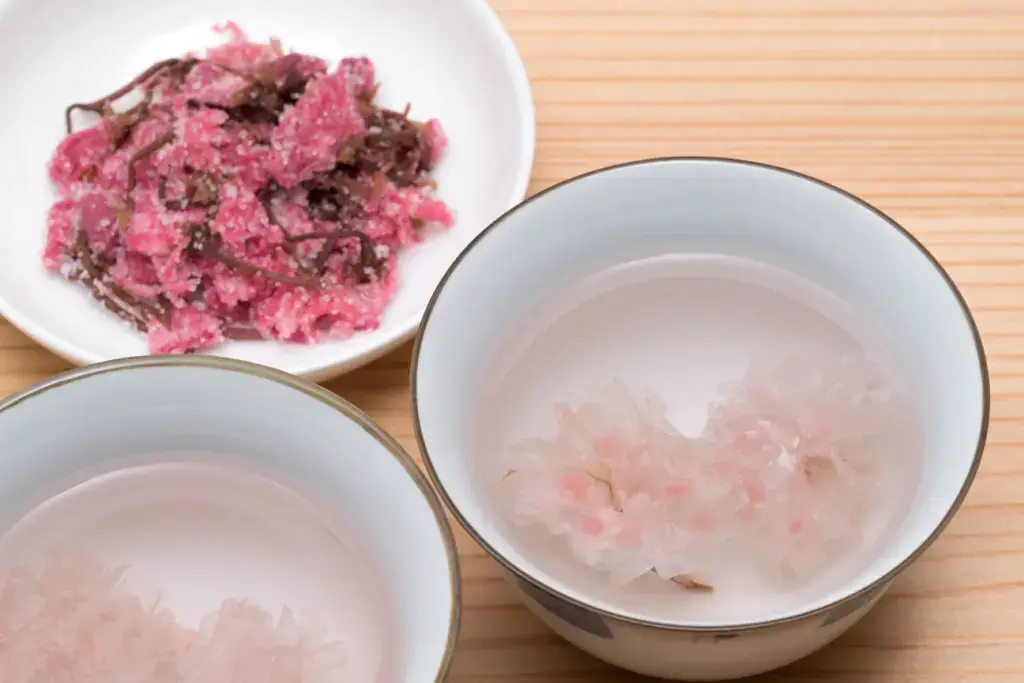
Water is heated to about 50 degrees Celsius and carefully poured over the flowers. The blossoms then reopen once water is added. The tea steeps to the desired flavor, strength, and saltiness as they slowly unfold. The now soft flowers float on the water, hopefully forming perfect sakura blooms.
There are two kinds of cherry blossom tea – salty and sweet. Salty tea is more traditional. The sweet type is less popular because of the extra steps involved. The added salt must be removed from the dried sakura repeatedly. Then, sugar must be added for a completely different taste. All without tearing the sakura flowers.
What pairs well with cherry blossom tea?
Because of this tea’s salty taste, it pairs best with other salty foods. Luckily, salted cherry blossoms are also used for cooking and making sweets. Tsukemono is a good match, as it also contains sakura. And foods containing vinegar (suzuke) or rice vinegar are also good choices. Salted vegetables such as umeboshi, the famous Japanese salted plums, are also popular pairings.
Sakura rice balls
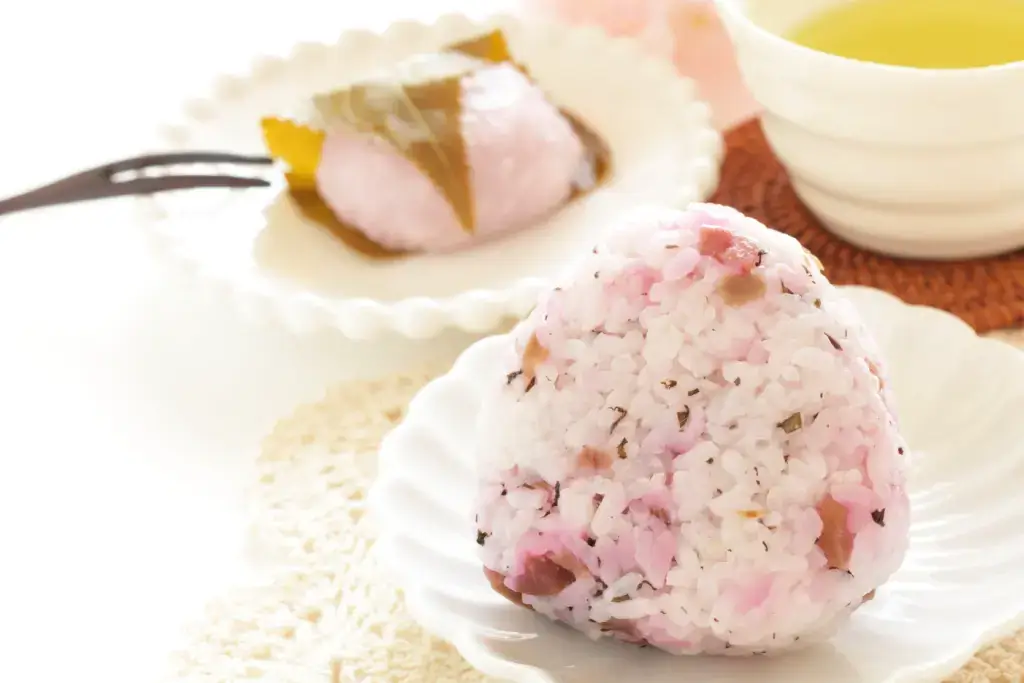
Japanese lunch boxes called “hanami bento” are trendy when viewing sakura. It is customary for these to include rice balls (onigiri). Rice balls containing chopped cherry blossoms and shibazuke (eggplant pickled in salt and ginger) match well.
Sakura mochi
Sakura mochi also uses double cherry blossoms; the preparation and taste are almost identical. Cherry blossoms are washed, sprinkled with salt, and left to dry for about three days. Once dried, they are soaked in rice or white plum vinegar before extra moisture is squeezed. But it is dried in the shade instead of directly in the sun, as with tea. The result is dark pink, sakura-flavored mochi.
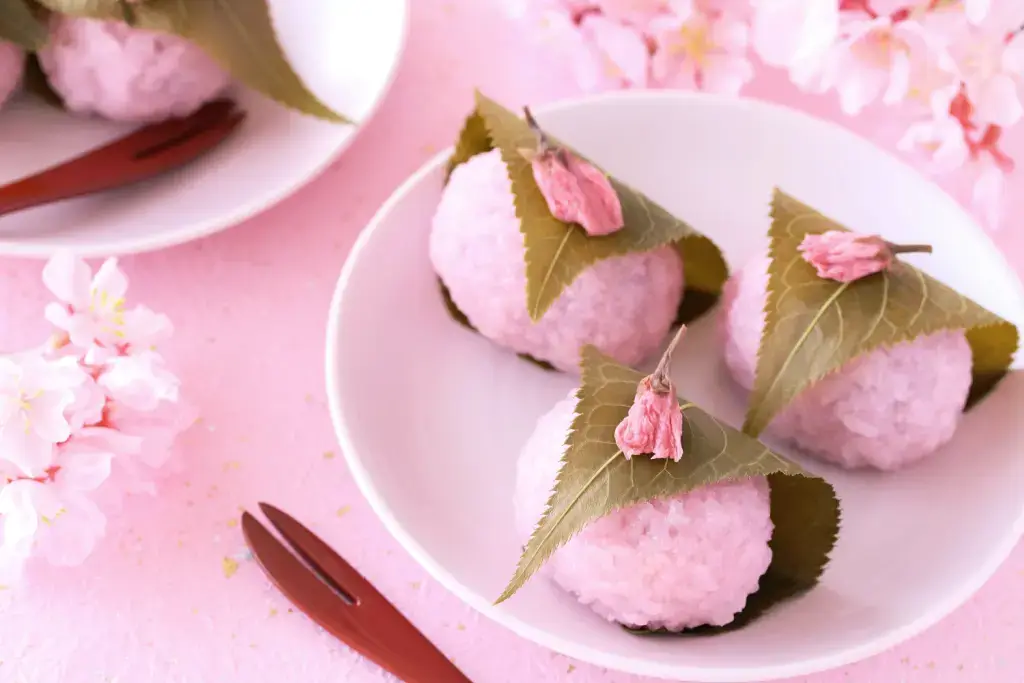
Wagashi
Hanami dango also pairs well. This treat’s pink, white, and green colors represent the colors of spring itself. They represent cherry blossoms, new spring buds, and snow, respectively. More specifically, the green part of hanami dango is made of mugwort, or yomogi.
Where can I get this tea in Japan?
Supermarkets, specialty stores, and confectionery shops
Sealed tea packets of “cherry blossom blend” from companies like Lipton are common but seldom authentic. You can sometimes find true “salted cherry blossoms” in larger supermarkets like Daiso, in the confectionery or baking section. Otherwise, you may visit a shop specializing in Japanese ingredients.
Tea House Yamanenen
One such shop is Tea House Yamanenen in Sugamo, Tokyo, with over 40 years of experience selling 100 percent Japanese tea. They carry over 200 teas sourced from villages throughout Japan, available in powder, loose leaf, and tea bag forms. And, of course, they also sell all-natural, whole cherry blossoms already pickled and salted.
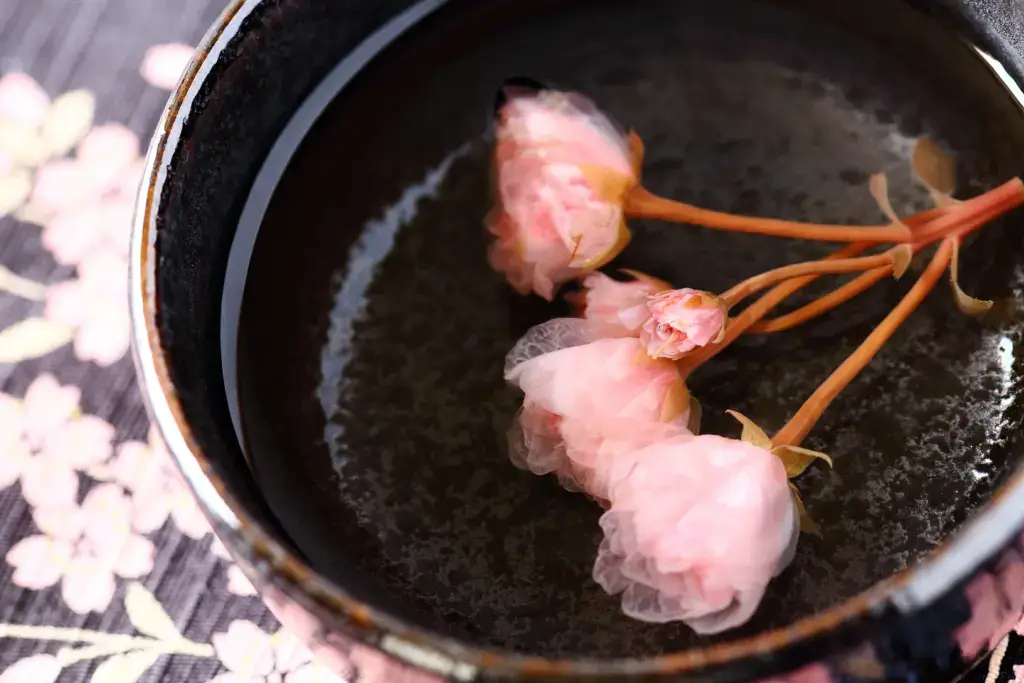
Homemade
You can also make your own simple sakura tea with some time and patience. Picking double cherry blossoms would be easiest, as they are the most flavorful. Gently wash and wipe the blossoms, sprinkle with salt, and leave overnight under a heavy book. This helps keep the shape of the flowers. Add plum vinegar the next day, and let it soak with a weight again. Then, remove from the mixture and let them dry on tissue paper in the sun for a few days. Once dried, you can sprinkle with salt again before serving.
Why should I try this tea during the spring?
There is no particular etiquette for cherry blossom tea besides serving it in traditional Japanese porcelain cups. Because of this, it can be enjoyed casually, unlike many other Japanese teas. You can drink the cups of tea with one hand two hands, or even slurp it like ramen. Some people eat the flower afterward, but there is no pressure. Sipping it slowly and savoring the aroma and taste is only recommended.
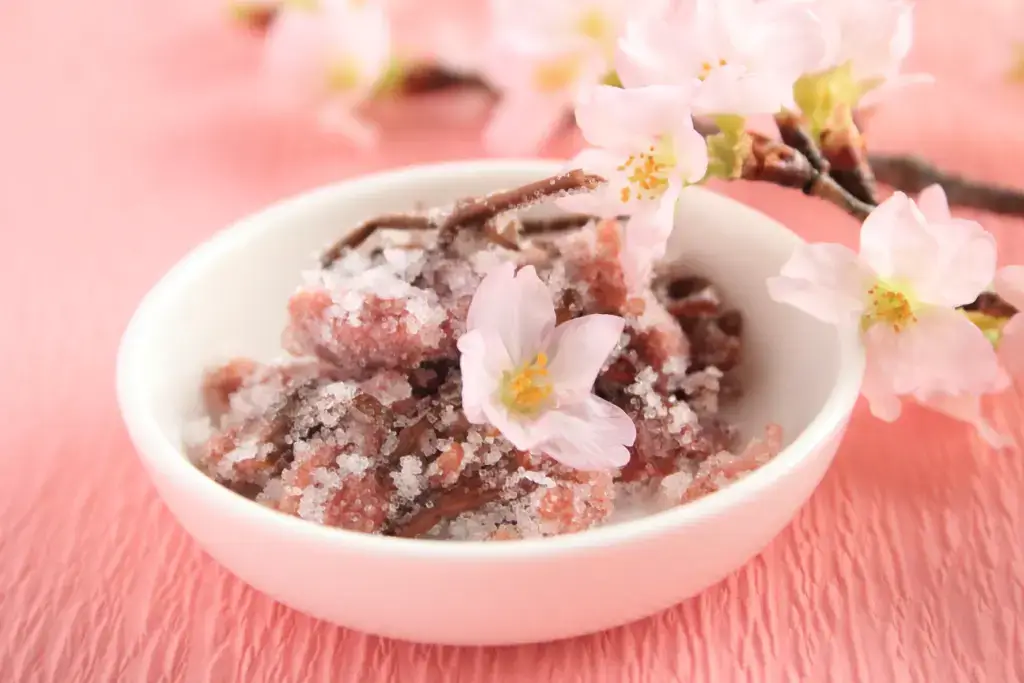
Drinking this tea is a great way to celebrate new beginnings in traditional Japanese style. It is also believed to bring good luck in new relationships. It is the perfect beverage for hanami and is well-suited to foods served during spring picnics. The sakura taste and smell tie in nicely with the surrounding smells of blooming flowers. And it’s light, refreshing taste is excellent for the warming days of spring. Do you know of any other foods that pair well with sakuracha? Feel free to share below!


